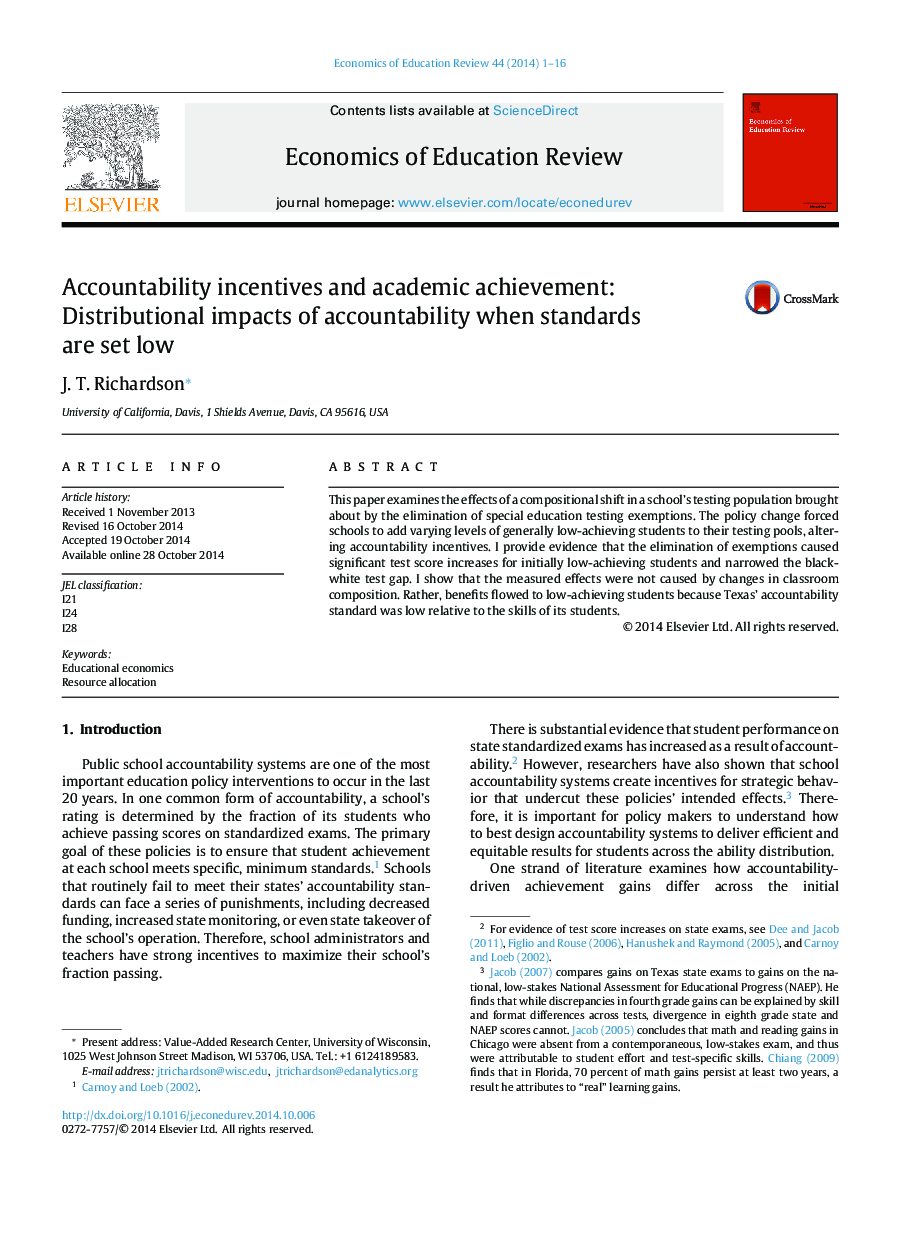| کد مقاله | کد نشریه | سال انتشار | مقاله انگلیسی | نسخه تمام متن |
|---|---|---|---|---|
| 354362 | 1434819 | 2015 | 16 صفحه PDF | دانلود رایگان |
• I examine the effects of a compositional shift in a school’s testing population.
• I exploit a plausibly exogenous elimination of testing exemptions in Texas.
• Within-school, cross-cohort variation in exemptions identifies the effects.
• Test gains flowed to those with previous achievement near the proficiency standard.
• Low standards benefited low-scoring students and decreased black-white gaps.
This paper examines the effects of a compositional shift in a school’s testing population brought about by the elimination of special education testing exemptions. The policy change forced schools to add varying levels of generally low-achieving students to their testing pools, altering accountability incentives. I provide evidence that the elimination of exemptions caused significant test score increases for initially low-achieving students and narrowed the black-white test gap. I show that the measured effects were not caused by changes in classroom composition. Rather, benefits flowed to low-achieving students because Texas’ accountability standard was low relative to the skills of its students.
Journal: Economics of Education Review - Volume 44, February 2015, Pages 1–16
